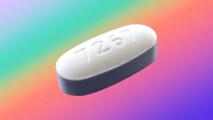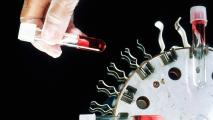Mammograms are the best way to screen for breast cancer, but they’re also famously unpleasant and unreliable. Many women go through unnecessary surgery to remove benign lumps, and mammograms can also miss deep tumors. But a new pill promises to revolutionize diagnosis by making cancerous cells light up under infrared scans, hopefully eliminating false positives and catching hidden tumors.
False Positives: Annual mammograms are recommended by health authorities to catch breast cancer early—which they totally do. Unfortunately, along with catching more cancers, they also catch more benign growths and other abnormalities that aren’t serious health risks. A study in Denmark last year found that as many as a third of women who got surgery or chemo to remove breast cancer turned out to have benign or non-life-threatening tumors. But doctors can’t easily tell the difference on x-rays, so patients often err on the side of caution, choosing drastic treatments over the risks of waiting.
Making Cancer Glow: Scientists at the University of Michigan have developed a much more precise tool to both find tumors and detect benign growths. Their pill delivers a dye that tags a molecule found on cancer cells, and then lights up under an infrared scan. Doctors can fine tune what molecules get stained to distinguish between aggressive cancers and benign lumps. The best part is that infrared scans can actually go deeper than mammograms, finding tumors in dense tissue that normal screening would miss, and they don’t use potentially harmful X-rays.
A Failed Drug Saves the Day: Making the dye work as a pill was important, not only because people hate needles but also because some people are allergic to IV dyes. Getting a dye from the stomach to the organs is tricky, but U-M researchers found an old, failed cancer drug that could do exactly that. The drug didn’t work to stop cancer, but it could get molecules through the stomach, past the liver, into the blood and onto the tumor. When scientists gave the pills to mice with cancer and then scanned them, they saw the tumors light up.
Bottom Line: If it continues to work in humans, it will be a real breakthrough: a less painful, more accurate, and safer way to screen for breast cancer. Since half of women aren’t getting mammograms now, a diagnosis that promises fewer false positives and a more comfortable test could significantly improve overall screening, while cutting down on scary and unnecessary treatments.





